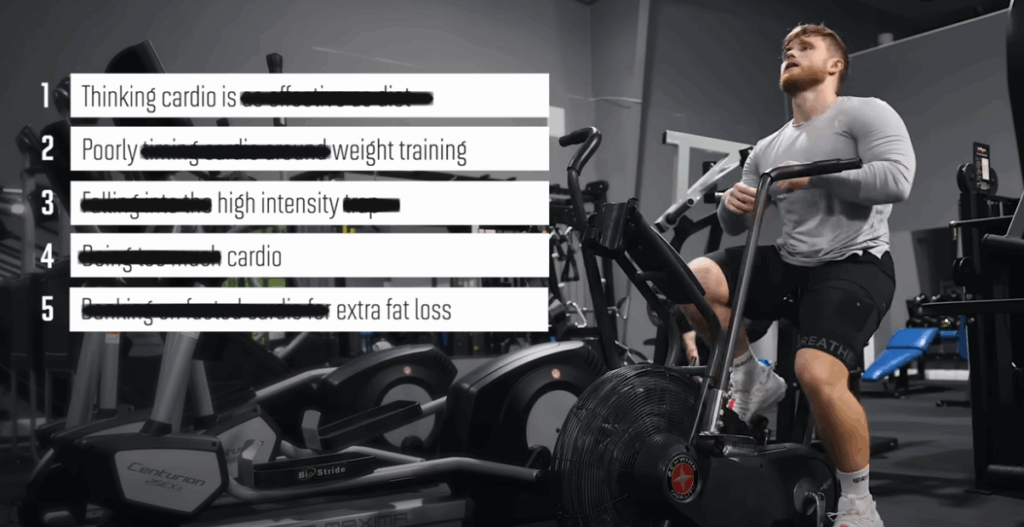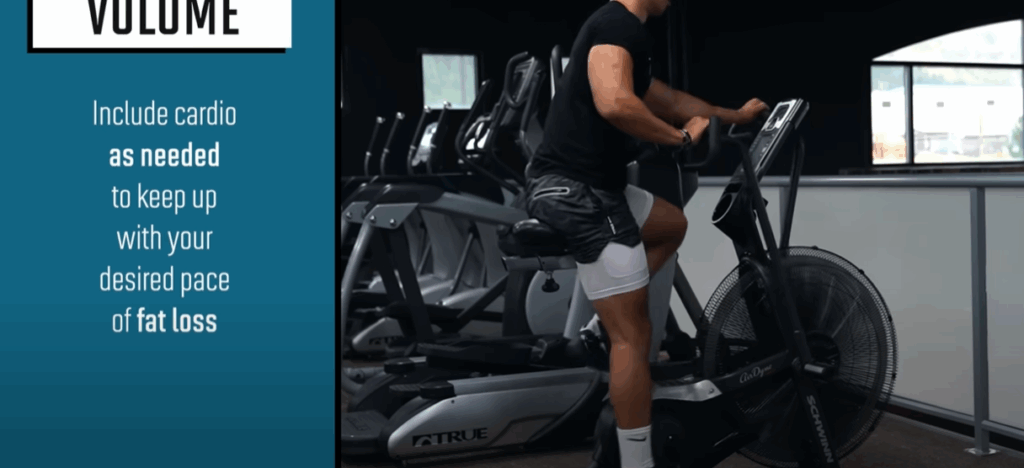Top 5 Cardio Mistakes That Sabotage Fat Loss (And What to Do Instead)
Cardiovascular training can be a powerful ally in your fat loss journey—if it’s used correctly. When done with purpose and structure, cardio improves heart health, boosts work capacity, and helps keep body fat in check. But when misapplied, it can stall progress, interfere with strength gains, and even lead to burnout.
Let’s break down the five most common cardio mistakes people make when trying to lose fat—and how to avoid them for sustainable, long-term results.

1. Overestimating Cardio’s Role in Fat Loss
A widespread misconception is that cardio alone is enough to burn away fat. The reality? Your diet holds far more influence over the number on the scale.
Weight loss ultimately boils down to creating a calorie deficit. While cardio does burn calories, the total output is often less than people assume. For instance, walking briskly for an hour may burn 300–400 calories. That’s equivalent to one small dessert or a couple of tablespoons of peanut butter.
Even high-effort sessions may not move the scale much. In fact, scientific studies have shown that actual weight loss from cardio often falls short of predictions due to metabolic compensation. In simple terms: the body tends to conserve energy elsewhere or triggers increased hunger when activity rises.
This doesn’t mean cardio is useless—it can absolutely assist fat loss. But it should be viewed as a complement to smart eating, not a replacement.
2. Doing Cardio Before Weight Training
If your primary goal is to build or retain muscle, doing cardio before resistance training can backfire. This is known as the “interference effect,” where endurance exercise reduces your body’s ability to perform optimally during strength sessions.
Studies have shown that when cardio is done immediately before lifting weights, especially intense or prolonged cardio, it leads to decreased performance, reduced strength gains, and diminished hypertrophy over time.
To maximize both muscle growth and cardiovascular endurance:
- Do cardio after weight training, not before.
- Or, ideally, separate them by several hours or alternate days entirely.
- A brief 5–10 minute warm-up before lifting is fine and can improve performance—but long cardio sessions before training should be avoided.
Beginners may not notice much interference, but advanced lifters and those training for strength or muscle development should be especially cautious.

3. Believing High-Intensity Cardio Is Always Better
High-Intensity Interval Training (HIIT) has become a buzzword in the fitness world. While HIIT can be effective and time-efficient, it’s not always the best approach—especially if done too frequently or without structure.
The main appeal of HIIT is that it allows for significant calorie burn in a shorter time and may slightly increase post-exercise calorie expenditure (known as EPOC or “afterburn”). However, the extra calories burned post-workout are usually modest—studies suggest it’s often less than 100 calories even after intense sessions.
Additionally, HIIT shares similarities with strength training in terms of effort and muscle recruitment. Performing both regularly can lead to overlapping stress, which may impair recovery, reduce lifting performance, and increase injury risk.
Unless you enjoy HIIT or have limited time:
- Stick to 1–2 HIIT sessions per week.
- Focus most cardio on low to moderate intensity steady-state sessions (like walking, cycling, or incline treadmill work), which are easier to recover from and more sustainable.
4. Doing Excessive Cardio Without Strategy
More cardio doesn’t always mean better results. In fact, doing too much can stall muscle growth, decrease strength, and lead to overtraining.
A review of studies on concurrent training found that higher frequencies and longer durations of cardio negatively affected strength and hypertrophy, particularly when performed more than 3–4 times a week or for extended durations beyond 30–40 minutes daily.
Cardio should be programmed based on individual factors:
- Training experience,
- Recovery ability,
- Lifestyle activity levels,
- And your specific fat loss targets.
For example, someone with a physically demanding job may require less structured cardio than someone who works a desk job.
Recommended approach:
- Limit formal cardio to 3–5 sessions per week.
- Use lower-impact modes (like walking, biking, or elliptical) to reduce recovery stress.
- Pay attention to how your lifting performance and recovery are impacted and adjust accordingly.

5. Relying on Fasted Cardio for Fat Loss
The idea that fasted cardio—exercising on an empty stomach—burns more fat has been popular for years. But research consistently shows that fat loss over time is the same whether cardio is done fasted or fed, as long as calories and macros are controlled.
While fasted cardio may increase fat oxidation during the session, this doesn’t necessarily translate to more fat lost throughout the day. Your total calorie balance matters far more than when you eat before cardio.
That said, there’s nothing wrong with fasted cardio if you prefer it or it fits your schedule. In advanced cases, such as physique athletes during contest prep, there might be minor benefits. A compromise is to perform fasted cardio after consuming 25–30g of protein to minimize muscle breakdown while keeping insulin low.
Practical Guidelines for Using Cardio for Fat Loss
So, how should you structure your cardio routine to support fat loss and muscle retention?
1. Let diet lead the fat loss process.
Cardio is an effective tool, but reducing calories through nutrition should always be the primary method for creating a deficit.
2. Match cardio volume to your lifestyle and goals.
Desk-bound? You might need more movement. Already active outside the gym? You may not need much added cardio.
3. Time your cardio smartly.
Do it after lifting, or at a separate time (morning/evening split or alternate days) to minimize interference with muscle growth.
4. Use HIIT sparingly.
1–2 sessions per week is plenty. Prioritize low-impact options for sustainability and recovery.
5. Don’t obsess over fasted cardio.
Choose whatever time allows for consistency and enjoyment. Fed or fasted, it won’t make or break your results.
Cardio Can Help—But It’s Not a Magic Bullet
The key takeaway? Cardio should support your training and fat loss strategy, not dominate it. When used intelligently—based on your recovery, goals, and personal preference—cardio can boost your conditioning, help maintain leanness, and set the stage for long-term success.
Focus on consistency, prioritize resistance training, manage your nutrition, and sprinkle in cardio where it makes sense. That’s how you win the long game.



